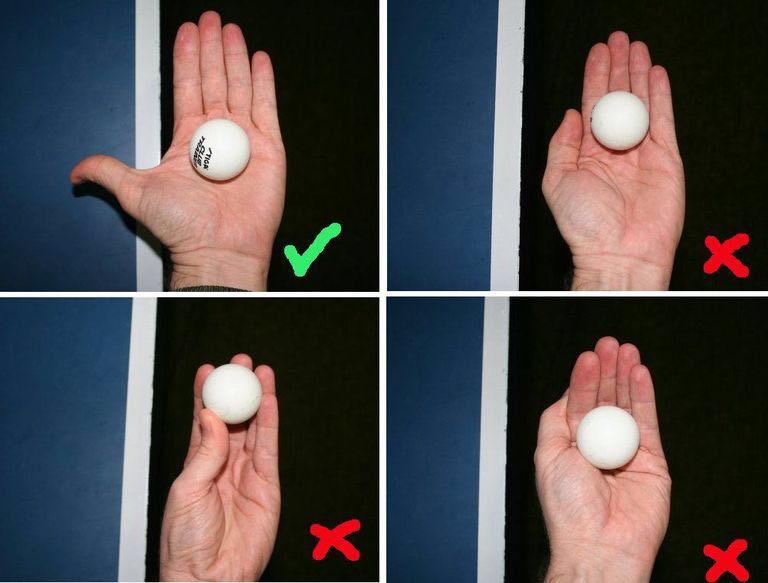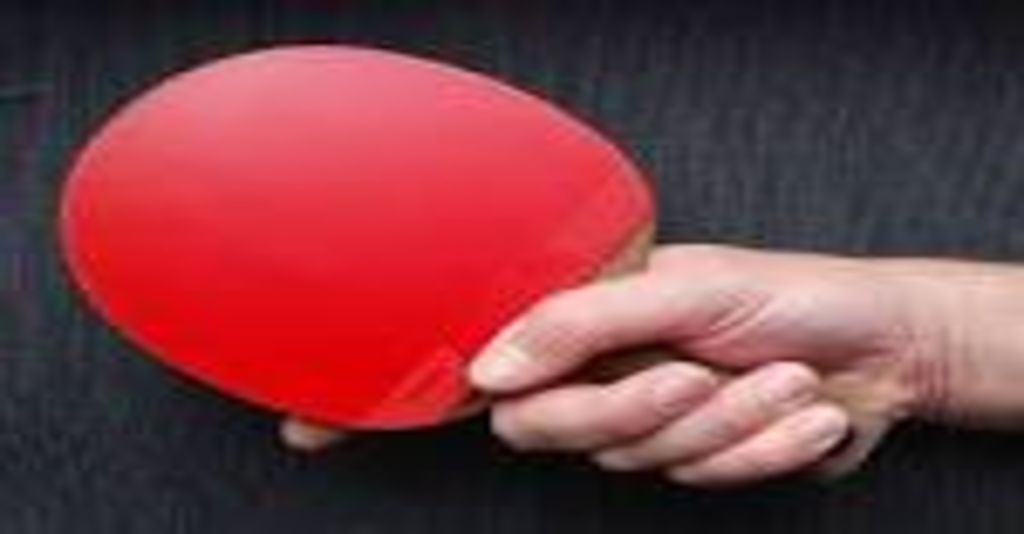Table Tennis, also known as Ping-Pong and whiff-whaff, is a sport in which two or four players hit a lightweight ball, also known as the Ping-Pong ball, the game takes place on a table tennis table divided by a net and played back and forth across the net on the table using table tennis rackets held by the players. The game takes place on a table tennis table divided by a net. It is a fast-paced sport that requires quick reflexes and great hand-eye coordination.
Table tennis table a full size table tennis table dimensions… 9 feet (2.74m) long, 5 feet (1.525m) wide and 2 feet 6 inches (76cm) high from floor. This is a good table tennis table to have if you are considering to take this sport seriously. Make sure you have a distance of at least 152.4 cm at each end of the table tennis table so as to ensure that you and your opponent have enough space to move around while playing.
Table tennis table net is 6 inches (15.25 cm) high. It is attached to vertical posts, which in turn project 6 inches (15.25 cm) outward. In total, the net is about 6ft. (183cm) long.
The table tennis ball is available in different sizes. However, as per the international rule, the table tennis ball is 1.57-inch diameter and has a mass of 2.7 g. Or 0.095 oz. Table tennis balls are made of celluloid, which is the same material from which photographic film is made. It is not considered a true plastic. Celluloid is a composition of nitrocellulose and camphor. A flat sheet of celluloid is soaked in hot alcohol until soft.
A table tennis racket (also known as a “paddle” or “bat”) is used by table tennis players. It is usually made from laminated wood covered with rubber on one or two sides depending on the player’s grip. Unlike a conventional “racket”, it does not include strings strung across an open frame. All of these elements are chosen accordingly to your needs and then assembled with the use of special table tennis glue.
Table tennis rubbers are the piece of the bat that made contact with the ball when you strike it. They consist of a top sheet and an underlying sponge. There are various types of rubber such as inverted, short pimples, long pimples, and ant spin. However, the vast majority are the inverted style.




HOW IT IS PLAYED
The game usually starts by deciding who is going to serve first and who is going to receive. The game begins after deciding which player will serve first.
Service and Return
The game is commenced by the player who serves. The ball is raised at least 16 centimeters in air without any spin and is hit by the racket in such a way that it hits the server’s side of court once before going on to the receiver’s court without touching the net.
Let
A rally of unscored results is referred to as Let. This could occur because of many reasons, but a few are −
- When the receiver is not ready and the ball is served.
- The ball is concealed and either the umpire or the opponent player is in doubt of the serve.
Scoring
There are many scenarios where one player gets points. A few are −
- If the ball touches anything, not the net, before reaching the opponent.
- If the opponent fails to return or service.
- If the player hits the ball with wooden part of racket, not the rubber part, then the opponent gets a point.
- Player gets a point when the opponent obstructs the ball.
Alternation of Services
Service can change depending on game point of the match. Regardless of the winner of rally, service keeps changing between opponents. A Deuce is played, when both the players have ten points each and each player serves for one more point. The service and receiving doesn’t change in Deuce. Players change sides of the table at the end of each game. When one of the players scores five points first, players change the ends regardless of serving turn. If players miss changing sides or if are serving out of turn, the points are still calculated and game is resumed from there.
TYPES OF STROKES
Usually strokes in table tennis are divided into two categories − Offensive and Defensive strokes.
Offensive Strokes
HIT
This is a very powerful stroke with more speed and less or no spin at all. It is hard to return this kind of stroke, but is usually played to keep the ball in the game. The paddle is perpendicular to the direction of stroke
SMASH
As the name itself, it is a stroke which is very powerful. Usually played to return a serve that’s either too high or too close to the net. A lot of acceleration and accuracy is needed to deliver this stroke.
LOOP
This attack gives the ball more spin than speed. The racket is parallel to direction of stroke. This kind of stroke results in topspin and jumps a bit forward after hitting the opponent’s side of the table.
COUNTER HIT
This hit, if delivered with correct accuracy, could be as good as a smash. When the ball is hit immediately after it bounces on the table, it results in counter-hit. To achieve this stroke, bat should be very close to the ball.
FLICK
When the backswing is compressed to a short wrist swing, it gives a flick. Usually, played by participants, when the ball has not bounced beyond table’s edge.
This stroke is usually played to return a serve and when there is no much room for backswing. This could resemble loop in the way it is played.
Defensive Strokes
PUSH
This stroke causes a backspin and makes the ball float slowly in air to the opponent’s side. This attack is popular by name slice in Asia. This stroke can be difficult to return because of the back spin action. This serve might land very close to the net and is difficult for amateurs to play. However, experienced players could return this serve with a loop and could put the opponent in a tough spot.
BLOCK
This stroke might look easy, but could destroy the opponent. One doesn’t hit the ball, but simply puts the racket so close to the ball, that it hits the racket right after its bounce. Block could change the side of ball landing on the table, which can be highly advantageous as the opponent wouldn’t be able to judge the ball. Usually in block, the ball is returned with the same energy and angle with which it was served.
CHOP
This is the backspin counterpart of loop. This strike is made when the ball lands almost at the end of the table. Hence, the strike is very heavy, and requires more energy. This backspin is usually a return to the opponent’s topspin. If played well, the ball is horizontal to the table while in air with a little rise. Chop is extremely difficult to return. Only certain players can demonstrate variations in chop like no-spin impact or side spin.
LOB
This strike propels the ball to a height of about 5 meters, to land on opponent’s table with highest spin. A good defense lob is so effective that it can be used as a return to smash. To make a return to this strike, players usually back off from the table for about a few meter and run towards the table to hit the ball with maximum speed and strength. This strike is very powerful because of its unpredictability of spin.
A GAME
When either one of the players scores 11 points then, he / she is declared as winner of that particular game. In case both the players reach 10 points, then the player who achieves two points before the other one is declared as winner of the game.
A MATCH
According to ITTF, a match is the best of odd number of games. Usually a match consists of 3, 5 or 7 games.
TABLE TENNIS BENEFITS
Table Tennis sports is one of the fastest game played which need complete focus and concentration while playing, and equally important self-strategy and tactical, can say equally use of brain along with physical body. Playing table tennis reduces stress among children and adults. At any age it still can be played and moreover it has less injuries. Importantly it have positive effect on children’s education.
-
Make children follow discipline and make them physically active.
-
First step we focus in developing among children to hold racket properly and play with right action and use of footwork
-
We develop among children to be more focus and concentrate
-
Step by step various strokes we teach and played with them.
-
Once they know all ways of playing then we make them play in tournaments.
WHAT WE PROVIDE IN TRAINING
Our training is supported by interesting and innovative learning equipment’s that are easy to use. We focus on developing the overall skills that are required to be a good table tennis player. We make sure each child is given personal attention to and ensure they understand the techniques.
-
Improves overall fitness and improves body muscles.
-
Improves eye hand co-ordination and reflection
-
Build confidence and develop skills among children
-
Boosts brain power and increases self esteem
-
Improves cognitive functioning, and develop resilience.

